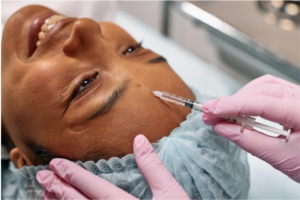What To Expect Post-Rhytidectomy Surgery

Image from Pexels
Also called a facelift, rhytidectomy surgery is a reconstructive technique that can reduce signs of aging and give the face a more puerile, recharged look. The process includes taking off surplus skin from the face and neck region and tightening underlying muscles for a sleek, more youthful look. After the rhytidectomy (facelift) procedure, patients may be subject to tenderness, contusions, and swelling in the treated areas. These side effects normally go away within one to seven days though complete healing may take between several weeks to a few months. Here’s what to anticipate post-rhytidectomy surgery.
1. Pain and Discomfort
After your facelift, you may experience some discomfort and pain in the areas where the incisions were made. Your surgeon will likely prescribe medication to help manage any pain or discomfort you may be feeling. Cosmetic surgery experts perform the ponytail facelift technique in New York City to improve and rejuvenate the face and neck area by removing the excess skin from the face and neck. This procedure is done by lifting the hairline, trimming excessive hair, and tightening underlying facial and other muscles beneath the skin. It can be performed on both men and women to give them a youthful face. The pain and discomfort you may experience during surgery are usually expected and last only a few days.
2. Swelling
Swelling is a natural result of surgery, and it can take several weeks for the swelling to subside. While most people do not experience much swelling, certain factors can increase the likelihood of experiencing this post-rhytidectomy side effect. Hypertension, excessive smoking immediately before surgery, and advancing age can all increase the risk of experiencing swelling after surgery.
3. Bruising
Bruising is also a common side effect of rhytidectomy surgery. Bruising is a discoloration of the skin caused by leaking blood into tissue or muscles under the skin. Minor bruising may blend in with your natural skin tone, whereas more severe bruising could be highly visible to others. Bruising can occur in areas where incisions were made during rhytidectomy surgery and areas surrounding these incisions, including the ears and neck area.
4. Scarring
Rhytidectomy surgery will leave scarring in the areas where incisions were made. These scars exact type and appearance can vary from person to person. Depending on the extent of your rhytidectomy, you may have several scars visible on your face and neck area. To reduce the appearance of these scars, apply sunscreen with an SPF greater than 30 to areas where incisions were made and wear sun-protective clothing when going outside. Additionally, use a concealer or foundation to cover scars as needed.
5. Bruxism
Bruxism is a condition that affects the jaw and teeth. Those who suffer from bruxism grind their teeth while asleep, which can often cause discomfort in the mouth and jaw area. Discuss this with your doctor if you experience bruxism after rhytidectomy surgery. They may recommend certain remedies to help reduce the symptoms of this condition, such as using a mouth guard at night or using a cold compress on the jaw area during the day to reduce pain.
6. Blistering
A large number of rhytidectomy surgeries are performed on the face and neck. If this is the case, you may experience blistering or peeling in these areas. While the skin in these areas may appear normal during the first few weeks after rhytidectomy surgery, some slight peeling or blistering may occur months later. The best way to reduce the appearance of these minor side effects is by avoiding contact with water or acid. Additionally, wear sunblock with an SPF greater than 30 or wear long sleeves and pants outside.
7. Numbness
It is common to experience numbness in the face and neck after a facelift. This is since rhytidectomy surgery can sometimes cause damage to nerves in the areas where incisions were made. This numbness should gradually improve over time as your body heals. Your doctor may recommend using certain medications or creams to help reduce any discomfort you may be feeling from the numbness.
8. Activity Restrictions
Your surgeon will likely recommend that you avoid strenuous activities for several weeks following your rhytidectomy surgery. It is important to follow these instructions to ensure proper healing and avoid complications. Additionally, it is important to protect the incision sites from sun exposure and keep them clean and dry at all times. For instance, limit any strenuous activities that may cause sweating in your treatment areas, such as heavy exercise or outdoor jobs.
Conclusion
Rhytidectomy surgery can help to revitalize the face and neck area, making you look younger and more vibrant. However, this procedure can sometimes cause discomfort and other side effects. It is important to understand these side effects and how to prevent or treat them so that you can heal properly and reduce your recovery time.
